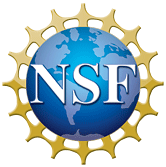Meeting:Abstract 2011 CSDMS meeting-095: Difference between revisions
m WikiSysop moved page Temp:Abstract 2011 CSDMS meeting-095 to Meeting:Abstract 2011 CSDMS meeting-095 without leaving a redirect |
m Text replacement - "USA" to "United States" |
||
| Line 20: | Line 20: | ||
|CSDMS meeting city=Golden | |CSDMS meeting city=Golden | ||
|CSDMS meeting state=Colorado | |CSDMS meeting state=Colorado | ||
|CSDMS meeting country= | |CSDMS meeting country=United States | ||
|CSDMS meeting email address=rmaxwell@mines.edu | |CSDMS meeting email address=rmaxwell@mines.edu | ||
|CSDMS meeting phone=-- | |CSDMS meeting phone=-- | ||
Latest revision as of 15:10, 10 June 2017
| You probably paid. If not: | 
|
Browse abstracts
Towards a complete description of the hydrologic cycle: Large scale simulations with the open-source, parallel, ParFlow hydrologic model.
[[Image:|300px|right|link=File:]]Integrated hydrologic models are growing in application and show significant promise in unraveling connections between the surface, subsurface, land-surface and lower atmospheric systems. Recent advances in numerical methods, coupled formulation and computing power have all enabled these simulation advances. Here, I will discuss the modeling platform ParFlow, an integrated hydrologic model that has been coupled to land surface and atmospheric models. I will then discuss a recent application of this model to a large, Continental-Scale domain in North America at high resolution that encompasses both the Mississippi and Colorado watersheds. Details will include techniques for model setup and initialization, in addition to results that focus on understanding fluxes, feedbacks and systems dynamics. Additional anthropogenic complications such as the effects of pumping, irrigation and urbanization will be discussed and a path forward for integrated simulations of the hydrologic cycle will be presented.
